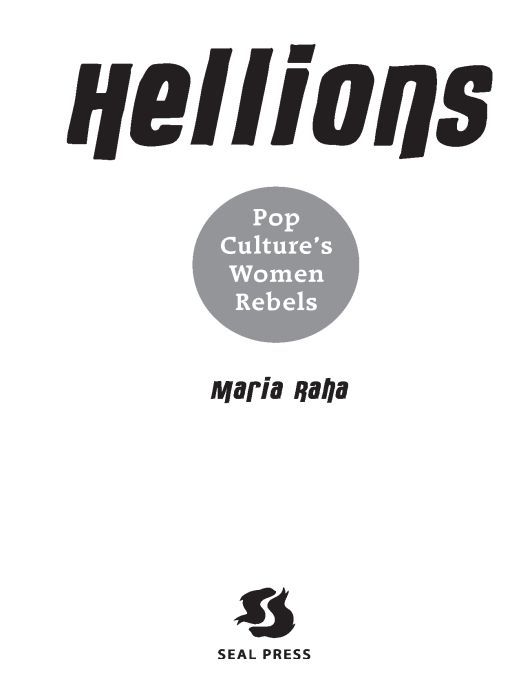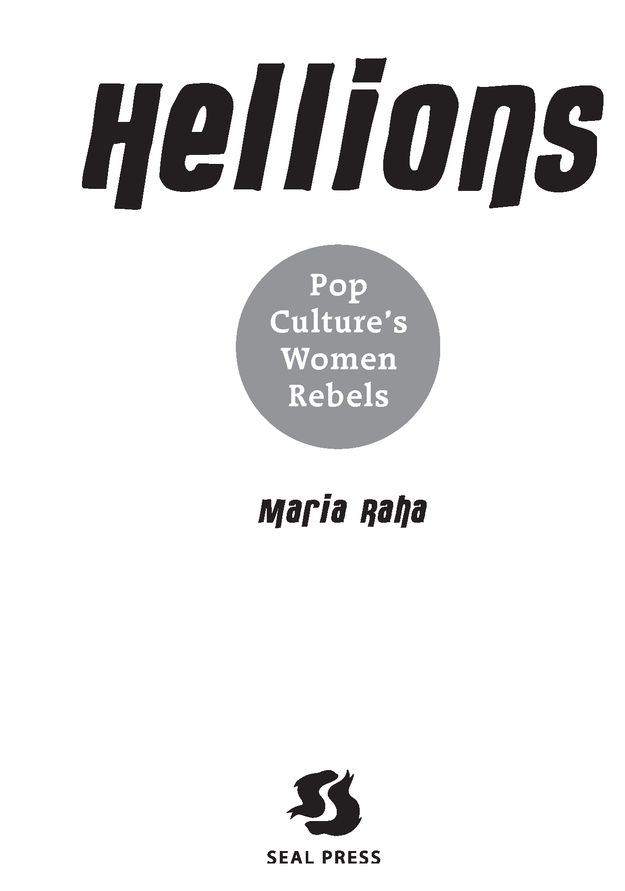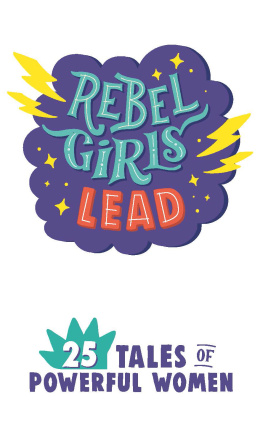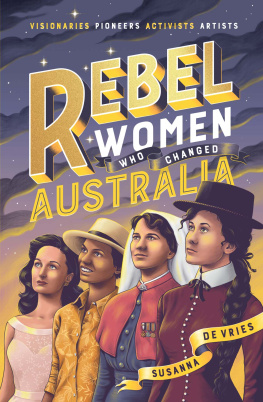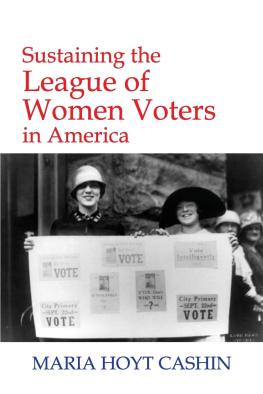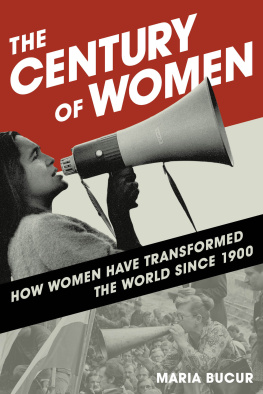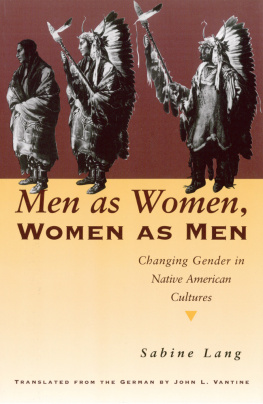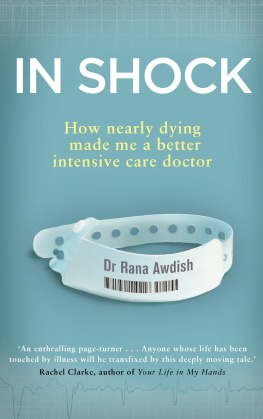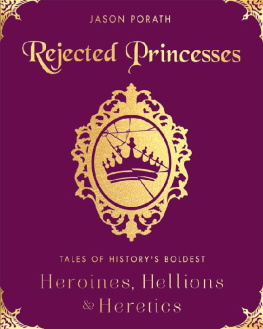Table of Contents
Dedicated to the feminist super-renegades of the 1970s
and all women
who have eased the way
Epigraph
It is useless to go to the great men writers for help, however much one may go to them for pleasure. Lamb, Browne, Thackeray, Newman, Sterne, Dickens, De Quinceywhoever it may benever helped a woman yet, though she may have learnt a few tricks of them and adapted them to her use.
Virginia Woolf, A Room of Ones Own
Introduction
You mustnt give your heart to a wild thing. The more you do, the stronger they get, until theyre strong enough to run into the woods or fly into a tree. And then to a higher tree and then to the sky.
Holly Golightly, Breakfast at Tiffanys
Rebels have always populated my life. When I was young, mostly fictional outcasts fought for elbow room in my thoughts, on my overstuffed bookshelf, and in the prime-time television companionship I cherished when I was too young to know better. Many of the women and girls whose audacity I admired were questionable rebels at best, but they all somehow went against the cultural grain, informed my own rebellious sensibility, engaged and emboldened my spirit, and propelled me to search for more marginalized stories, characters, authors, and images as I grew up. Among others, there was Jo Polniaczek on the sitcom The Facts of Life and Little Womens Jo Marsh. There was the gum-cracking, rock n roll cool of Pinky and Leather Tuscadero on Happy Days; Rizzo in Grease; a vengeful Carrie White; Cyndi Lauper; Pat Benatar; the quiet and confused opposition of the characters Judy Blume created; a shorn-haired Helen Slater running for her life in The Legend of Billie Jean; the outcast girls of John Hughess films; and Nellie Oleson on the TV version of Little House on the Prairie.
I always favored pop cultures rebellious characters, whether sneaky, snide, or sassyno matter what the medium or how badly they behaved. Any female character who couldnt keep me laughing, reading, or rapt instantly lost my attention. I cringed at the transformation of an apathetic, goth Ally Sheedy into a pearls-and-lace pretty girl in The Breakfast Club, and delighted in the insolent frown of blond-haired, blue-eyed Nellie Oleson. I was perfectly content with the way all these individualistic characters clamored to inform my definition of girlhood and womanhood, and what kind of woman I wanted to be. I found kindred spirits in fictional outcasts, sympathized with acts of willfulness that I didnt see in reality, and witnessed bravery greater than any Id found in traditional leading women or mainstream pop stars. Rebel girls and brats inspired me, made me feel less alone, and allowed me to smile at my own impertinence and at the seemingly unlimited possibilities of being a young girl and, later, a young woman. With an inner sneer, an outer temper, and a bent toward mischief good and bad, I was utterly possessed by girls who were far from sugar and spice and everything nice. They legitimized me.
When I was twelve, something else came along. I saw Rebel Without a Cause for the first time, and was hooked faster than I could mutter, Sayonara, Rizzo. Maybe I needed the complexity (and sensuality) of James Deans Jim Stark as I grew into a more complicated and rebellious girl. I began watching Rebel Without a Cause at least once a week, forgoing reruns of movies and television shows populated with the varied characters I was raised with through the 70s. Although I watched Rebel countless times, I have no memory of how I felt about Natalie Woods conflicted and angst-ridden Judy. All I remember is Jim, slumped over and brooding, as he suffered through and resisted the dysfunction of 50s middle-class culture.
Later, as I became consumed with the counterculture that defined the 1950s and 60s, I started reading Jack Kerouac, Tom Wolfes The Electric Kool-Aid Acid Test, and Hunter S. Thompson, and listening to Jimi Hendrix and the Doors, wishing I could write and live the way they did. Though the classic rebel image excluded bad girls, such as the characters who had formerly resounded with me, I slipped uncomfortably into romanticizing countercultural rebels without a thought to where the women around them lived or how they loved. Lacking easy access to female rebels who evolved with my own resistance and cultural sensibility, I threw myself wholeheartedly into classic American-male rebellion. At the timeas all of the women rebels Id witnessed as a girl slunk off the air or offscreen, or became victims of cultural amnesiano other option seemed quite as appealing.
I willed myself to ignore the fact that mid-twentieth-century American rebel men were still the standard for cultural images of rebellion, and that women, on the whole, were denied the right to enjoy similar renegade status. Instead, they were relegated to merely decorating the edges of mens lives and art, or serving as folly between mens travels, or plotting to foil male wanderers plans. And I didnt think twice about why the presence of the women I saw as rebels and outcasts during my childhood were fleeting, while the male characters and iconsalong with Marilyn Monroe straddling a subway grate and Lucy Ricardo whining to her husband, Rickylong outlasted the zeitgeist from whence they came.
Theres nothing inherently wrong with wanting to follow the trails blazed by loner rebel males. Beneath the surface and beyond the formula, though, there are many ways in which to rebel, live creatively, and be an individual. The girls of every decade who are restless enough to want to follow the call of the road, and who arent satisfied with mainstream cultures limited examples of female defiance, end up adoring the very heroes who would relegate them to the back seat of rebellion. The Beat Generations fixation on movement and spontaneity meant favoring new experiences no matter whom they left in their dust. Neal CassadyKerouacs and Ginsbergs mythic muse, a legend of the generation to younger fans, and the man on whom the enigmatic Dean Moriarty is based in On the Roadbounced from wife to lover and back to wife again. In 1950, he took a jaunt to Mexico, intending to get a divorce from his wife, Carolyn. After leaving Mexico, he headed to New York, married another woman, and got her pregnant without having divorced Carolyn.
The women involved in the Beat movement also wrote furiously, but without landing the acclaim granted to Jack Kerouac, William Burroughs, and Allen Ginsberg. Diane di Prima, for example, has written forty-three books and has been praised by her male peers, yet she is hardly as synonymous with the Beat movements influence as the aforementioned men. Given all the old trappings of what we as a culture consider attractive and culturally legitimate when it comes to womenand given target-marketed cultural products recent return to extreme gender specificitymost girls will dream only of dating a rebel, not of actually becoming one. The former dream seems safer and more accessible, if we measure it based on the ways in which active female artists often seem ill-fated and undermined, versus the fame and comfort that many male artists wives and girlfriends enjoy. It certainly has a history of more tangible social success than rebellion itself does.
Our most iconic, earlier images of male rebellion captured the imagination as powerfully as they did in the 1950s and 60s because, in an era when domesticity reigned, they symbolized courage, possibility, and liberation from the stranglehold of governmental authority and the status quo. But male rebellion also repeatedly whispers the limits women and girls represent to wandering American masculinity. As we sift through popular American rebel culture, we will find accommodating femininity in movies like

